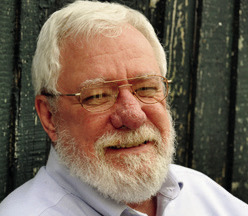Hobgoblins may still lurk, but no Sabbats
At Halloween we think about ghosts and goblins and strange things that go bump in the night, but there’s one of those spooky phenomena that we don’t have to worry about anymore.
A memoir written about 1901 and attributed to Judge Joseph Arsenne Breaux tells us that “there are no longer any Sabbats,“ and that their disappearance made it “all the more important to gather what old timers tell of these astonishing apparitions.”
The unsigned memoir, written in French, was found among Judge Breaux’s papers and donated to the Louisiana State Museum after his death in 1926. It records what are presumed to be the judge’s memories of south Louisiana folkways in the middle to late 1800s. Breaux, a native of Iberville Parish, was an associate justice of the Louisiana Supreme Court from 1890 to 1904 and chief justice from 1904 to 1914.
The manuscript was edited in 1932 by Tulane professor Jay K. Ditchy and published as Les Acadiens Louisianais et leur parler (Paris, 1932). In 1966, George F. Reinecke translated and edited parts of Ditchy’s work and published them as “Early Louisiana French and Folklore” in a special issue of Louisiana Folklore Miscellany (Volume II, 1966).

According to the memoir, Sabbats were bands of “hook-nosed wrinkled old women, men of bad repute and strange appearance, and loose-moraled young people” who used magical whirlwinds and other devices to carry away the innocent.
“At the beginning of the last century [the 1800s] there were still a multitude of these phenomena, as well as wizards and little devils dancing in the deep forest of St. Martinville, the uninhabited areas of St. Landry, the woods near Grand Lake Verret, etc.,” Judge Breaux wrote.
“Aerial singing and melancholy cries were heard on misty nights in winter, joined to the loud strains of musical instruments.” From up in the air would come the sound of dogs barking, screams, and laughter. This was “the devil’s Sabbat” passing by, sometimes stopping in an isolated place for a nocturnal meal and to dance “infernal round-dances.”
A traveler passing by the place would be stopped by an invisible hand. He would hear “strange noise and rustlings, shouts, and laughter in the depth of the woods. At dawn, cloven footprints could be seen. … [Sometimes] women’s shoes, broomsticks, and the leftovers of a banquet were found in places just vacated by the devils, sorcerers, and witches.”
The judge recounted the tale of a man who, in 1785, “was chased one night by one of these infernal bands and said he had clearly seen men and women pass above him, up in the air.”
The man said he even recognized one of the men, whom he questioned the next Sunday after church. “The devils carried me off,” the friend said. Then, according to Judge Breaux, “The neighbors separated only after secrets had changed hands, secrets which [were] never revealed.”
But, if the Sabbats were gone, there were still other things to worry about, according to the memoir.
“People still believe to some extent in sorcerers, spells, and certain imaginary beings, like the lutin (hobgoblins), who enjoy tormenting men and animals. Fortunes are told by means of certain ridiculous practices. Marvelous cures are believed in and attempted; these work through the agency of mysterious words, … secret remedies, and assistance from sleepwalkers and guerisseurs or healers.”
Even as late as 1901, Judge Breaux asserted, “I know some prominent people who firmly believe that with one word, touch, or wink, sorcerers work on livestock and make them sickly or cause their death. They assert that a certain powder can kill men and animals, and cause the crops to fail.”
And, of course, the feu follet and loup garou may still be on the prowl “in the deep forest of St. Martinville,” or maybe right in the middle of town.
You can contact Jim Bradshaw at jimbradshaw4321@ gmail.com or P.O. Box 1121, Washington LA 70589.

